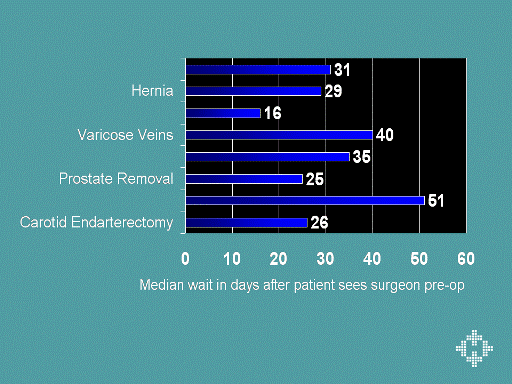 |
Waits for
Selected Procedures: 1992-96
To answer these questions, DeCoster,
Carriere et al (1998) 11
studied wait times in each year between 1992 and 1996 for eight commonly
performed non-emergency surgical procedures. Since some of them (e.g. hernia
& varicose vein repair) are easily delayed, if access is a problem, very
long waits would be expected. Cataract surgery was examined separately
because it is available both publicly and in private clinics. The
median waiting time was calculated for all procedures.
Results
Most waits were from 25 to 35 days; the longest waits were for varicose vein
repair (40 days) and tonsillectomy (51 days). From 1992 to 1996, waiting
times only increased for two procedures (varicose vein removal by 13 days
and carpal tunnel release by 8 days). Three wait times shortened by 4 to 7
days (gallbladder removal, prostate surgery, and tonsillectomy).
Group to group, region to region, Manitobans’ waits are alike: rural
patients do not wait longer than urban patients; women are nto kept waiting
longer than men; nor are the wealthy ‘bumped up’ ahead of middle- or
low-income patients. Seniors tend to have surgery sooner, possibly because
retired people have more flexible schedules than people in the work force. |
